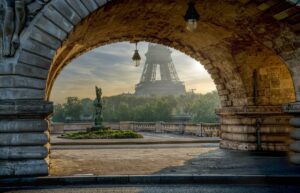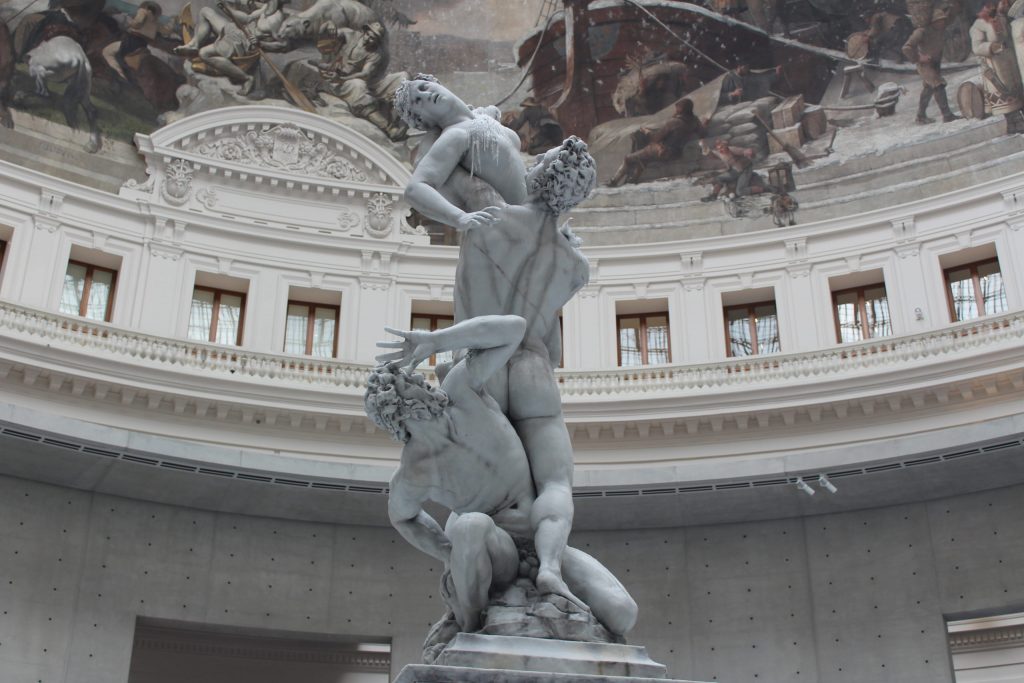
When I first moved to France, Chatelet-Les Halles was one gigantic construction zone. The underground mall was being re-built, and a public garden and park was planned for the surface above it. It may have taken the better part of a decade, but Chatelet-Les Halles is finally finished. I say finally, because this past May, the renovated Bourse de Commerce on the west side of the park finally re-opened. This historical building is now a brand new museum for contemporary art, and it quickly became the talk of the town. Naturally, I paid a visit as soon as I could.
Bourse de Commerce – An Intriguing Circular Building
I had always wondered about the circular building on the west side of Chatelet-Les Halles. Specifically, I always wanted to see inside it, but it had always been decidedly closed to the public. The building was originally built between 1763 and 1767 as a place to store and sell wheat and other grains. It was later renovated in the late 19th century, and between 1889 and 1998, the Bourse de Commerce was home to the General Union of the Paris Commodities Exchange. In other words, it was a stock market for over a century.
Today, the building is listed as a historical monument, and in 2016, the city of Paris leased it to French billionaire François Pinault for use as an art gallery and exhibition space. Yet another renovation began in 2017 under the stewardship of Japanese architect Tadao Ando, and in May of 2021, Paris officially welcomed its latest museum for contemporary art. Meaning I could finally see inside the building that had intrigued me for all these years.
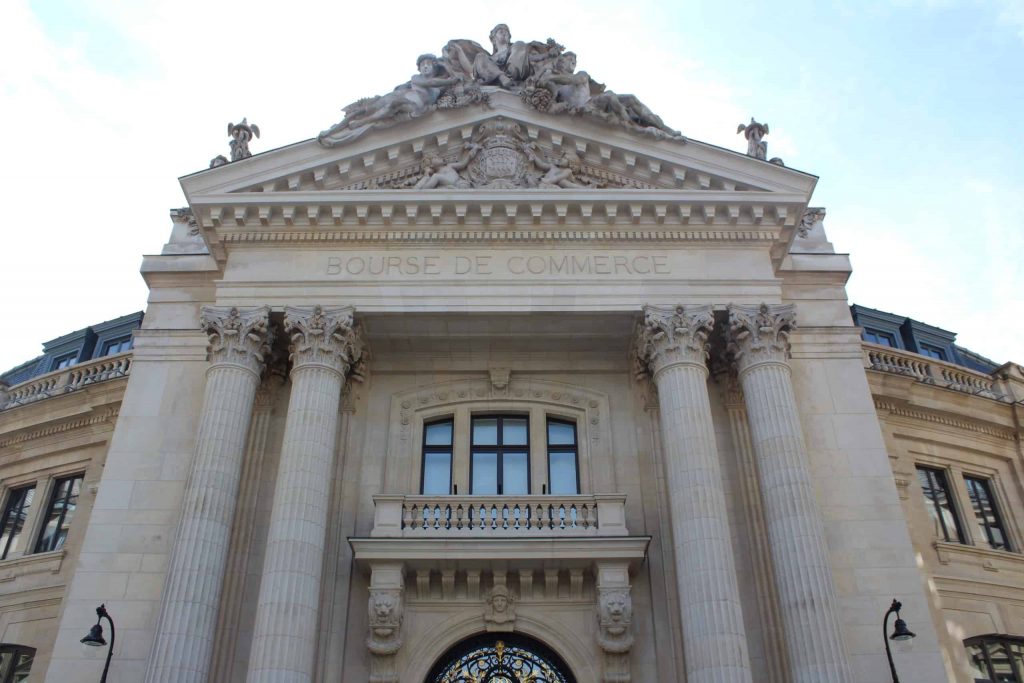
The Pinault Collection
François Pinault is a legendary art collector. His personal collection contains over 5,000 pieces and is rumoured to be worth over $1.65B. The Bourse de Commerce was designed specifically to showcase this collection, meaning many of the pieces on display are being shown to the public for the first time. There are four levels of galleries to explore altogether, but the centrepiece of the exhibition is located in the Rotunda. This is where you will find a series of wax sculptures called Untitled (2011), by Swiss artist Urs Fischer. The main sculpture, a replica of Giambologna’s The Abduction of the Sabine Women, is pictured above.
That’s right. The photo at the top of this article is not a photo of a marble or any other type of stone sculpture. It is entirely made of wax, and the embedded wicks were all lit on the first day of the exhibition. They will continue to burn until the end of the year, meaning the sculptures on display will change in shape day to day. Eventually, they will completely melt away. If you look carefully at the photo above, you can see the trails of wax across the woman’s chest, and her upper arm has already disappeared. It’s fascinating to think that every visitor will experience a different work of art depending on what day they visit.
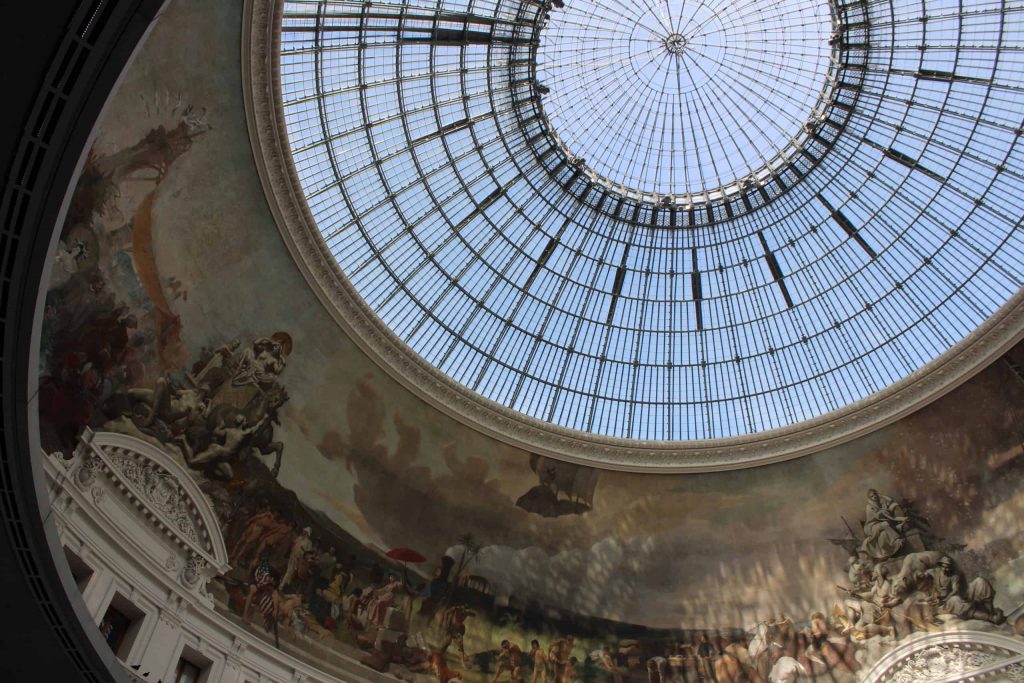
The rest of the building is stunning, and in particular, the domed cupola above the Rotunda is gorgeous. The art itself, however, ranges widely. I am not an art critic, nor am I an art history major, so I always tell people to take my opinions on art with a grain of salt. But I will say that some of the art on display was breathtakingly beautiful. And some of it was very… contemporary. Although I will say that it did tickle me to no end to know that someone was able to convince a billionaire to spend money on what was essentially some gel smeared on a mirror.
However, despite my misgivings about some of the pieces, the collection overall is well worth a visit. In particular, the basement holds two art installations that are extraordinary. The Ground, by Tarek Atoui, is an aural sculpure installation. Offspring, by Pierre Huyghe, is a sensory installation utilizing light and movement in a black box space. And yes, I know that both of those are terrible descriptions, but please trust me when I say that they are incredible works of art.
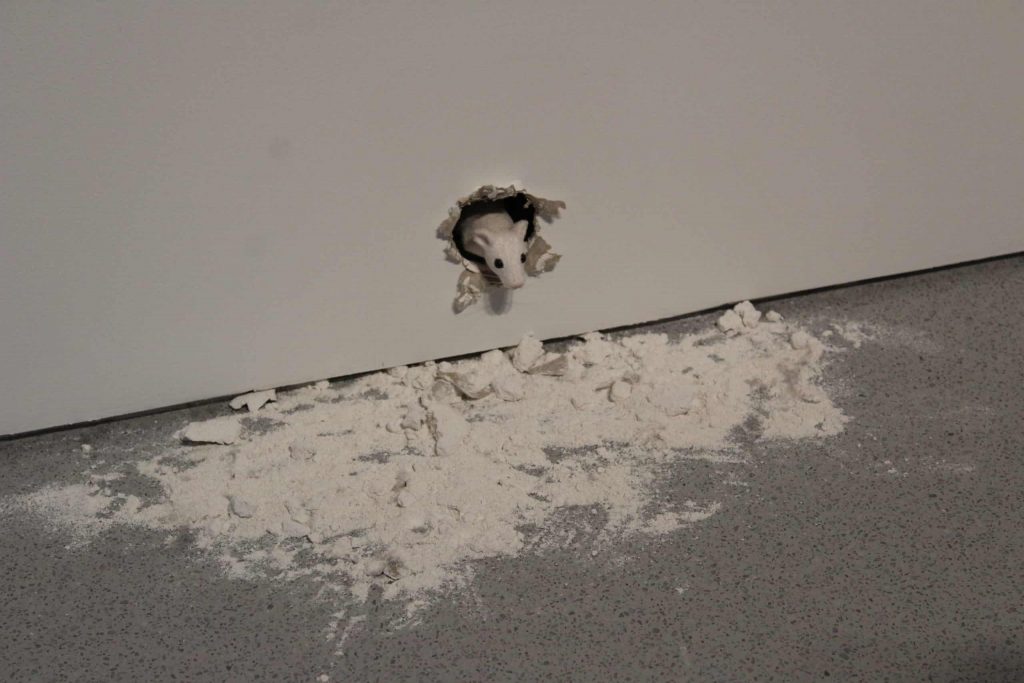
It is also worth noting that art can be found throughout the building, even in the most unlikely of places. There were several times when I thought a chair off to the side was a resting place for the museum workers, only to get a closer look and discover that the chair was in fact another wax sculpture. But the highlight by far was the little mouse above. Just as my friend and I were about to leave, we heard a voice that sounded like a small child. However, there were no children in the vicinity. After following the sound of the voice, we discovered the above installation. It was a tiny mouse poking out of the wall with an accompanying voice track, and it was bizarre, hilarious, and adorable, all at the same time. It was also a perfect encapsulation of what to expect when you visit the Bourse de Commerce.
The current exhibition runs until December 31st. If you find yourself in Paris between now and then, I highly recommend a visit if you’re looking for something new. I know I will be back next year to see what other treasures from the Pinault Collection will be on display.
But I really hope the mouse stays.
Laura Moore is a professional storyteller who loves history and the many stories that make Paris one of the most fascinating cities in the world. Join one of her signature tours to learn the story of a city.



